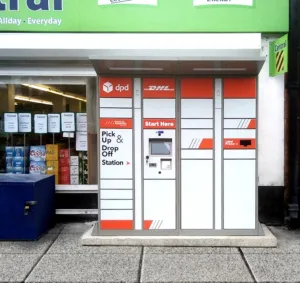By Olivia Shaw, Marketing Co-ordinator, Amplience
As we say goodbye to the balmy days of September and October rolls in, consumer thoughts are turning to the Autumn season. And it’s a cue for online retailers to refresh their sites for Peak season and put their minds to warmer woollies instead of summer sizzlers.
The last thing that any retailer wants, however, is a heart-sinking moment when they realise they’ve served up a shopping experience for the new season that doesn’t live up to expectations. To avoid disaster striking, we’ve highlighted five of the biggest online bloopers and provided some tips on how retailers can ensure customers are delighted, and not disappointed, with their Autumnal offers.
Mobile text overlap
Designing a site so that it is mobile friendly is essential. If a customer is looking for a new scarf to keep them warm and uses their smartphone to land on a website where the text is jumbled up, they won’t waste time trying to read about the product. They’ll instantly be off to a competitor. Page design is about so much more than just being visually appealing, and clear content and product information is fundamental.
Puzzling picture swaps
There’s nothing more frustrating for a customer than finding a picture of the perfect product while browsing, only for them to realise – when they click on the link – that they are seeing a completely different item on a retailer’s website. This is down to poor navigation, but unless a customer’s journey is seamless, they will soon disengage, and they are very unlikely to make a purchase.
Poor representation
Whether you are selling clothes, or a city break in Europe, customers expect the glossy images and great reviews they see online to be an accurate reflection of what they are buying. If a customer feels the offering has been misrepresented, not only will they want their money back, but they are also likely to express their disappointment on social media or write a disgruntled review. A brand’s reputation can quickly suffer if word spreads, and trust is hard to win back once it has been lost.
Outdated communications
Who hasn’t, at some point, opened an email for a campaign only to find that the discount code has just, or is about to, expire? Customers are not constantly checking for discounts, and they’ll often open a campaign email only to come back to it later. Retailers need to build in some time for the campaign to resonate before a purchase is made and that way, they will generate a better response instead of frustrating customers who constantly feel they are missing out.
Too many popups popping up
The fastest way to send customers into the arms of a competitor is by using popups that eclipse the products they are trying to look at on a website. It’s even more annoying if the popups ask for personal information, or offer discounts to non-subscribers, when the customer is already a subscriber! What happened to loyalty? Popups have their place, but timing and relevance are everything when it comes to enhancing the user experience.
With these ‘crimes of eCommerce’ now established, we want to outline how retailers can avoid bad practice, and instead make sure customers have a great new Autumn season shopping experience.
Here are our top three tips:
Smart content structure
Being able to add updates easily and frequently when needed without resorting to a complete site overhaul or time-consuming development time, means investing in a content management system (CMS). This is the key that allows content changes to be made, not only in context, but if you are using an Amplience CMS, also in real-time.
Content timing and positioning
It is important to plan when and where content on the website is placed. It needs to resonate with the customer journey and create a seamless experience. A headless CMS will help retailers to be more strategic about where they position content variants to match different time events. What’s even more helpful is that retailers can preview these placements to experience for themselves the journey that the customer will take.
Popup strategy
The key to successful use of popups is to use them wisely. A popup can be a useful tool to encourage conversions, but it shouldn’t interrupt a customer’s journey by appearing in the wrong place, or too often. By thinking strategically about popups, retailers can link offers and promotions to the content that customers are engaging with at a precise moment, which will boost engagement and even nudge them happily towards the shopping basket.
By understanding the major blunders that they can make online, retailers are better positioned to control the experiences they are offering to customers and ease them into the new shopping season. Creating a seamless journey with content that is strategically placed will demonstrate a keen understanding of their audience and deliver opportunities to create long-term loyal customers.
Always remember the top three tips – smart content structure, good timing and careful use of popups – to avoid the online shopping bloopers that could result in a not-so-successful peak season for retailers.







